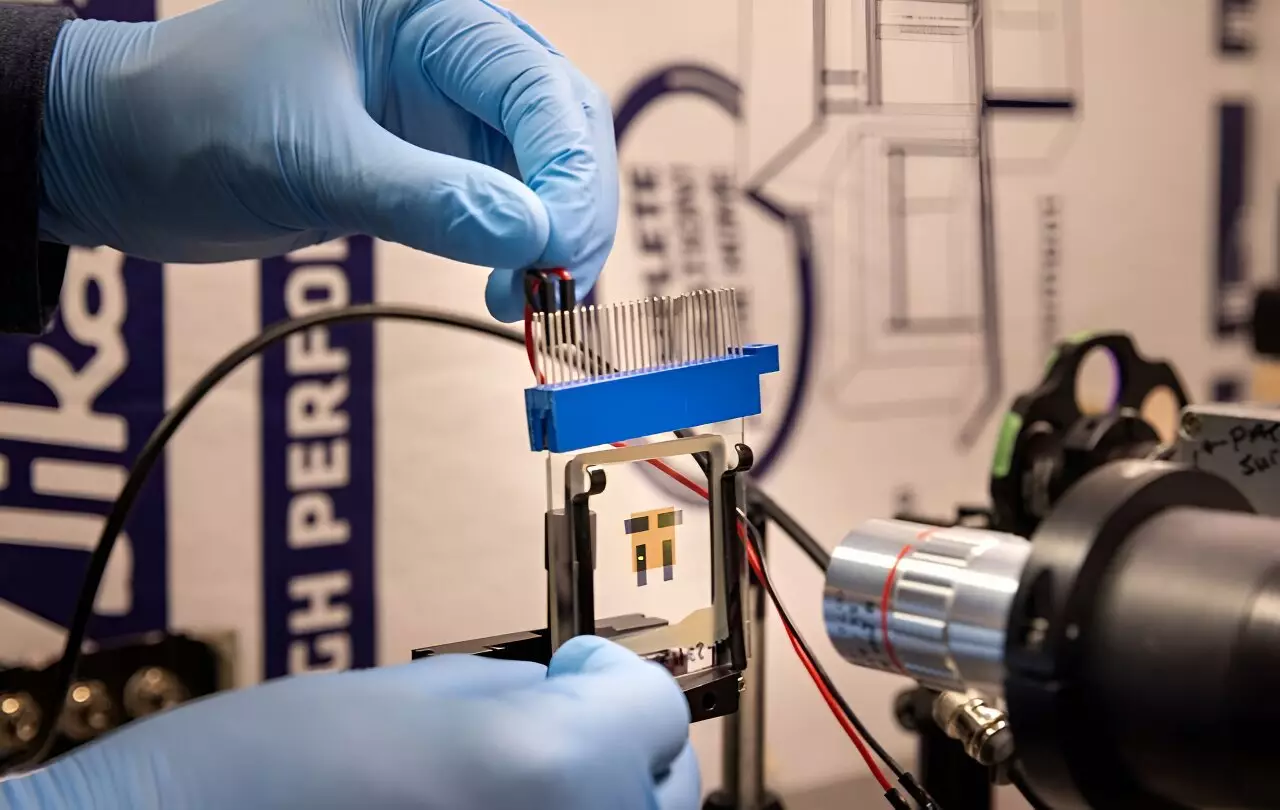Night vision technology has long been synonymous with bulky goggles and complex optics, often requiring sophisticated systems that hinder usability and portability. However, groundbreaking research from the University of Michigan proposes a revolutionary alternative: lightweight OLED glasses that may one day replace traditional night vision gear. This development marks a significant shift in how we perceive and utilize night vision capabilities, promising users enhanced practicality, reduced costs, and improved comfort for extended wear.
Current night vision technology primarily relies on image intensifiers that work by converting near-infrared light into electrons. This involves intricate systems housed in cumbersome equipment where electrons are accelerated and forced through a vacuum before they collide with phosphor screens, thus enabling visibility in low-light conditions. While these systems can amplify incoming light by an impressive factor of 10,000, their weight and complexity present practical challenges. The introduction of an OLED-based solution, however, could disrupt this conventional method by providing a significant amplification in a far more user-friendly format.
The new OLED device developed by the University of Michigan researchers amplifies near-infrared light into visible light with a much greater efficiency than previously possible, achieving over 100 times amplification without the need for the bulky components characteristic of older systems. Professor Chris Giebink emphasizes the remarkable thinness of this technology, with its light amplification occurring within a film stack that is less than a micron thick—a dimension that far surpasses the thinness of human hair. This transition from bulky equipment to a sleek and lightweight design offers substantial benefits in terms of portability and user comfort.
Moreover, the OLED operates on a considerably lower voltage than traditional systems, which could lead to reduced power consumption. This advantages users, especially in extended operations, as less energy consumption translates to longer battery life, making the technology more practical for field use.
The operational mechanism of the newly developed OLED involves a sophisticated interplay between a photon-absorbing layer and a five-layer stack of OLEDs. This system allows for a chain reaction where electrons convert into visible light photons, with an intended production of five photons for every electron that traverses the OLED stack. This feedback loop is pivotal in establishing a higher output of light from a given input, representing a significant improvement over previous iterations of OLED technology that generated equal amounts of input and output photons without any gain.
The concept of high photon gain demonstrates a monumental achievement in the field of thin-film devices, marking a notable advance toward more effective night vision systems. Lead author Raju Lampande notes that this is a pioneering stride in harnessing the potential of OLEDs for enhanced light amplification, setting a new precedent for future innovations in night vision equipment.
In addition to its remarkable amplification abilities, the OLED device exhibits a unique memory characteristic known as hysteresis. This trait allows the device to “remember” past conditions of light input, which could correlate with advancements in AI-driven computer vision systems. Such memory behaviors would enable the OLEDs to function more similarly to biological neurons, processing visual information in an intelligent manner that reflects the temporal nature of human vision.
While this memory capability introduces potential complications for immediate night vision applications, it opens avenues for developing more sophisticated image processing systems that align closely with the workings of the human eye. Rather than simply capturing images, the device could interpret and classify them, potentially leading to a paradigm shift in how visual data is processed.
Another significant advantage of this research lies in the fabrication process used for the OLEDs. Researchers utilized widely available materials and established manufacturing techniques, which not only promise cost-effectiveness but also scalability for future developments. This accessibility lays a foundation for continued exploration and integration of OLED technology across varied applications beyond mere night vision, potentially affecting fields like military operations, surveillance, and even commercial industries.
The University of Michigan’s pioneering work in developing a new type of OLED device to substitute traditional night vision goggles signifies a transformative leap forward in optical technology. With its lightweight design, enhanced amplification capabilities, unique memory behaviors, and scalable manufacturing processes, this innovation could redefine our expectations of what night vision systems can achieve. As research continues, the prospect of intelligent, efficient, and user-friendly night vision may well become a tangible reality.

